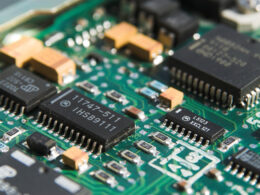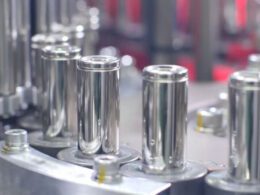Micron announces 32 Gbit FeRAM Chip: A Leap Forward in Memory Technology
In December 2023, US-based semiconductor company Micron announced at the International Electron Devices Meeting (IEDM) the development of a high-capacity FeRAM memory chip boasting a staggering capacity of 32 Gbits.
FeRAM memory technology has seen around two decades of existence, with usual chip capacities ranging between 8 to 128 Mbits. Micron’s new development, in contrast, offers significantly increased storage capacity that can potentially revolutionize non-volatile memory technology.
Setting FeRAM Apart
FeRAM memory offers faster processing speeds compared to NAND memory, rivaling the performance of DRAM memory chips. Moreover, FeRAM chips retain their stored information even without a power supply, similar to other non-volatile memory technologies.
In addition to its impressive speed and energy-independent properties, FeRAM memory proves more resilient against wear and tear, making it a more preferred choice for data storage devices. Furthermore, its higher resistance to radiation, magnetic fields, and temperature fluctuations make it an ideal choice for machinery, gadgets, and aerospace equipment.
Hurdles for FeRAM
Despite its advantages, FeRAM memory has not penetrated the mainstream market. This can be attributed to its low cell density, which prevented it from competing with NAND memory chips that offer substantial storage capacities. Even Micron’s joint development with Intel, the 3D XPoint memory (branded as Intel Optane), could not gain considerable market traction due to the affordable availability of NAND memory technology.
The Significance of Micron’s Announcement
Micron’s announcement of their high-capacity 32-Gbit FeRAM chip signifies a landmark event in memory technology. According to Micron, these high-capacity FeRAM chips could potentially accelerate the development of generative AI models, due to their faster performance and exceptional wear resistance. Their prototype can withstand up to 1015 rewrite cycles, which is several magnitudes greater than rival FeRAM chips from companies such as Fujitsu, Infineon, SK Hynix, and Toshiba. Importantly, it outlasts the limited lifespan of NAND chips that offer a mere thousand rewrite cycles.
The company labels their new memory product as Non-Volatile Dynamic Random Access Memory (NVD-RAM). Micron’s FeRAM chips reportedly offer a write speed of 70-120 ns, compared to the 300 μs offered by NAND memory. Additionally, FeRAM chips can retain data for up to 10 years.
Possible Acquisition of FeRAM Patents and Technology
It is speculated that Micron gained access to FeRAM patents and technology after acquiring the assets of Japanese company Elpida in 2013. While Elpida itself did not further develop this type of memory, the Taiwanese-owned Inotera Memories and Nanya Technology, previously owned by Infineon, used to manufacture FeRAM memory chips.
Technology Behind FeRAM
Commonly, the switching element of a FeRAM cell is constructed from piezoceramic material in the form of lead zirconate titanate (PZT). This material retains polarization even after the removal of an external electromagnetic field. In simple terms, each FeRAM cell comprises a control transistor and a piezoceramic capacitor. This piezoceramic element is the reason a cell is substantially large. How Micron was able to overcome this issue remains unclarified.





